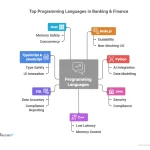
Developing a budget for your company is a crucial step in running a successful business. A well-developed budget will enable you to stay on top of your expenses and make sure you meet all of your financial goals. Getting started can be tricky, however, so check out this helpful guide to help you get the job done.
Identifying short- and long-term goals
When developing a budget, it is important to identify short- and long-term goals. Short-term goals can be defined by months or weeks, while long-term goals are characterized by years. You may also want to consider a number of key performance indicators (KPIs) that will help you gauge your progress.
For example, if you plan to buy a house, you will need to consider how much money you need to save for the down payment. The amount of money you need will be based on your income and the cost of the home.
In addition to saving for a down payment, you can also set a goal to eliminate debt. This can be a great way to stay on track for your long-term financial goals. Having a goal in place can also help you prepare for other life events, such as retirement.
Using a SMART framework to identify your goals can help you develop a successful budget. You will also be able to track your progress and make daily adjustments to your plan.
Formulas that project long-term income and expenses
It’s no secret that you should not go into a meeting with a skunk, but you don’t have to get a stout if you want to be a well rounded citizen of the world. That said, there are plenty of shady types out there, so make sure you’re up on your A game before you start a war of words with the good folks on your own dime. Not to mention, you may have some apsots that aren’t as scrupulous as you, or worse yet, your family. For a start, do you know who your A-team is? If not, evict them from your home or office and find them a new a home!
Monitoring the organization’s progress in developing a budget
Monitoring the progress of an organization’s budget is an important part of ensuring that funds are being properly managed. By tracking the progress of a budget, it is possible to identify areas that need improvement and to ensure that all parties involved in the process are aware of their responsibilities.
The creation of a budget involves a series of steps that take into account the current and future needs of the organization. This includes a review of historical data, financial records, and feedback from stakeholders. Once the initial plan has been developed, it is time to revise it, making changes where necessary. In addition, it is vital to monitor the progress of the budget on a regular basis.
The budget is an essential tool for any organization. It helps the business make informed decisions about the way it uses its resources. A balanced budget provides clear guidelines, giving the organization the opportunity to spend money on what it needs. As such, it is critical to make sure that all parties are involved in the process and that it is regularly reviewed.





